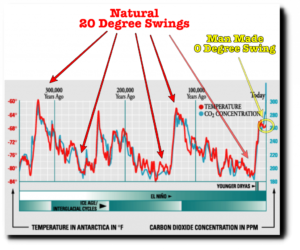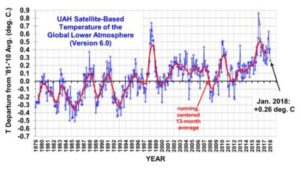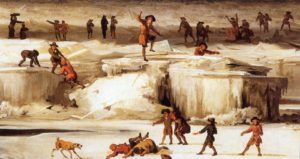by W. Eschenbach, March 9, 2018 in WUWT
I’m sure you can see the problem with Dr. Judith’s question—temperatures can rise without ANY new sources of heat or ANY change in existing sources of heat.
For example, regarding the climate system, every year there is more and more oil that goes into the ocean. This oil floats on the surface in a monomolecular layer, and it reduces both conduction and evaporation. As a result, the oceans end up slightly warmer than they would be without the oil … where is Dr. Judith’s mysterious “source of heat” supposedly driving that change?
Here’s another example … (…)




